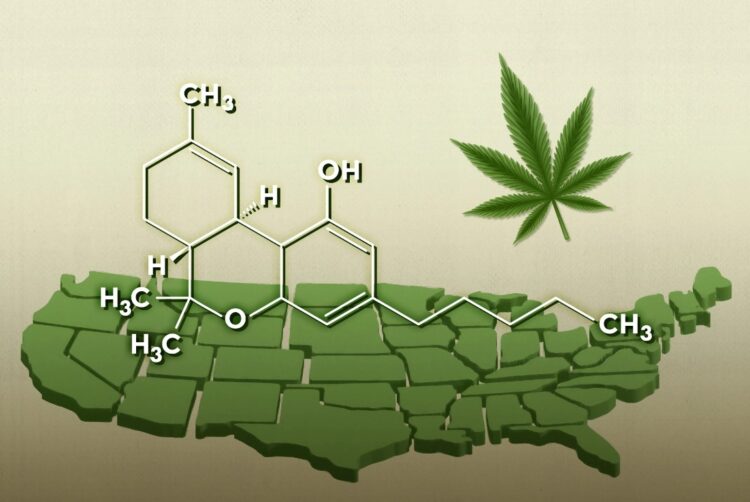Few topics spark as much debate as the contrasting regulatory approaches to tobacco and marijuana. That is why we aim to shed light on why these two substances, both with psychoactive properties and public health implications, are treated so differently under the law.
We’ll go through the historical evolution, health impacts, societal perceptions, and economic factors that have shaped their divergent legal paths.
Regulation Throughout History
Tobacco, deeply rooted in the traditions of Indigenous American cultures, was initially used in ceremonial and medicinal contexts. Its introduction to European settlers marked the beginning of its widespread commercialization.
Similarly, cannabis, originating from Central Asia, was known for its dual utility – both as a recreational and medicinal agent across various cultures. In these early stages, neither was subject to significant regulation, reflecting a general lack of awareness about their potential health impacts.
The 20th century brought about a pivotal shift in the regulatory landscape. For tobacco, the landmark Surgeon General’s report of 1964, which outlined the health risks of smoking, was a turning point. This led to a series of measures aimed at controlling tobacco use, including warning labels, advertising restrictions, and increased taxation.
In contrast, cannabis’s journey was more tumultuous. After enjoying widespread use, it faced increasing regulation and prohibition. This was largely driven by political and social factors, including rising concerns about drug abuse and associated moral panics, rather than clear scientific evidence of harm.
Health and Safety Impacts

The adverse health effects of tobacco are among the most well-documented in medical history. Smoking is a leading cause of numerous serious health issues, including various forms of cancer, heart disease, and chronic respiratory conditions.
On the other hand, the health effects of cannabis are more complex and less unanimously agreed upon. While it carries risks, particularly when used heavily or by adolescents, cannabis has also been acknowledged for its medicinal properties, including pain management and seizure control.
The clear health dangers associated with tobacco have led to some of the most stringent regulations any legal product faces. These have included everything from restrictions on advertising and sales to public smoking bans and packaging requirements.
The evolving understanding of cannabis’s health impacts, coupled with its recognized medical benefits, has led to a gradual shift towards decriminalization and legalization, particularly for medicinal purposes. This shift reflects a growing recognition of the need to balance public health concerns with the potential therapeutic benefits of cannabis.
Societal Perceptions and Economic Factors

Societal views on these substances have undergone significant transformations. Once a symbol of glamour and sophistication, tobacco is now widely recognized for its harmful health effects, leading to a general decline in its social acceptance.
Cannabis, conversely, has seen a reversal in its public image. Once demonized and associated with criminal activity, it is increasingly viewed in a more positive light, recognized for its potential therapeutic benefits and as a less harmful alternative to other recreational substances.
Economic factors have been influential in shaping the regulatory approaches to both substances. Despite facing numerous regulatory hurdles, the tobacco industry remains a potent economic force, contributing significantly to global economies through taxes and employment.
The emergence of legal cannabis markets, particularly in regions like Canada and certain U.S. states, has opened up new economic avenues. The legal cannabis industry not only promises substantial tax revenue but also presents opportunities for job creation, research, and development in a burgeoning market.
This economic potential has been a driving force behind the push for cannabis legalization in various jurisdictions.
Legal Discrepancies and Their Consequences
A direct comparison reveals stark differences. Tobacco, while legal, is subject to strict advertising bans, warning labels, and usage restrictions. Marijuana, on the other hand, sees a patchwork of cannabis regulations varying from complete prohibition to legal recreational use, reflecting a more cautious and experimental regulatory approach.
These discrepancies lead to notable consequences and controversies. The stricter control of tobacco is seen as a public health success, while the evolving stance on marijuana raises questions about criminal justice, public safety, and health. The legal inconsistencies between the two also highlight broader societal debates about substance use and regulation.
Future Outlook

The trajectory of substance regulation is poised for continual evolution. For tobacco, the trend suggests an intensification of restrictions, especially as emerging markets become more aware of the public health implications. This could manifest in stricter regulations on sales, more aggressive anti-smoking campaigns, and further limitations on advertising.
The landscape for marijuana is moving in the opposite direction. A global trend towards legalization, particularly for medicinal use, is gaining momentum. However, this movement is not without its complexities and controversies, as it intersects with issues of public health, criminal justice, and social equity.
Emerging markets represent a pivotal battleground in the fight against tobacco-related health issues. These regions, often targeted by the tobacco industry as potential growth areas, may see increased regulatory efforts.
This could include more robust health warnings, restrictions on where tobacco products can be sold or consumed, and higher taxation to deter usage. The challenge will be to implement these regulations effectively, considering the economic implications and potential resistance from well-established tobacco interests.
The shift towards marijuana legalization, particularly for medicinal purposes, reflects a growing acknowledgement of its potential health benefits. Countries around the world are reevaluating their stance on marijuana, often spurred by increased public support for legalization and the potential economic benefits of a regulated cannabis market.
However, the road to legalization is fraught with legal, social, and political hurdles. The challenge lies in creating a regulatory framework that ensures safe and controlled access, minimizes the potential for abuse, and addresses the historical injustices associated with marijuana prohibition.
Advocacy groups and research institutions will play a pivotal role in guiding future policy directions. Advocacy efforts, particularly those focused on public health and social justice, can influence public opinion and, consequently, policy decisions.
Meanwhile, ongoing research into the health effects of both tobacco and marijuana is crucial. As our understanding deepens, it could lead to more informed policies that better reflect the realities of these substances’ impacts on health and society.

The Bottom Line
The contrasting regulatory paths of tobacco and marijuana are a reflection of their complex histories, health impacts, economic implications, and societal perceptions. This analysis highlights the multifaceted nature of substance regulation, underscoring the challenges policymakers face in balancing public health concerns with legal and economic realities.
As knowledge and attitudes continue to evolve, so too will the laws governing these substances, in an ongoing effort to address the myriad issues they present.
 Hi Boox Popular Magazine 2025
Hi Boox Popular Magazine 2025



